The Palazzo Trinci in Foligno has a chequered history but preserves some of the greatest examples of late Medieval humanist art.
If you are in Umbria visiting towns like Perugia, Assisi or Spoleto, you might not consider adding Foligno to your itinerary. It doesn’t sit prettily on top of a hill, to start with, and with its valley-floor location it is surrounded by industrial areas. So for us at first Foligno was somewhere we went when we needed shops. This turned out to be a mistake – the historic centre has some wonderful medieval buildings, and as I posted here it hosts one of the more impressive historical re-enactment festivals. It also features a remarkable building and museum in the Palazzo Trinci, of which more later.
Being flat gives Foligno a different character to that of its Umbrian neighbours. The locals get around the historic centre on bicycles, and this makes it feel a bit like a northern Italian town – say Cremona or Treviso. Its being flat might also give your calf muscles some relief after a series of visits to Umbrian hill towns.
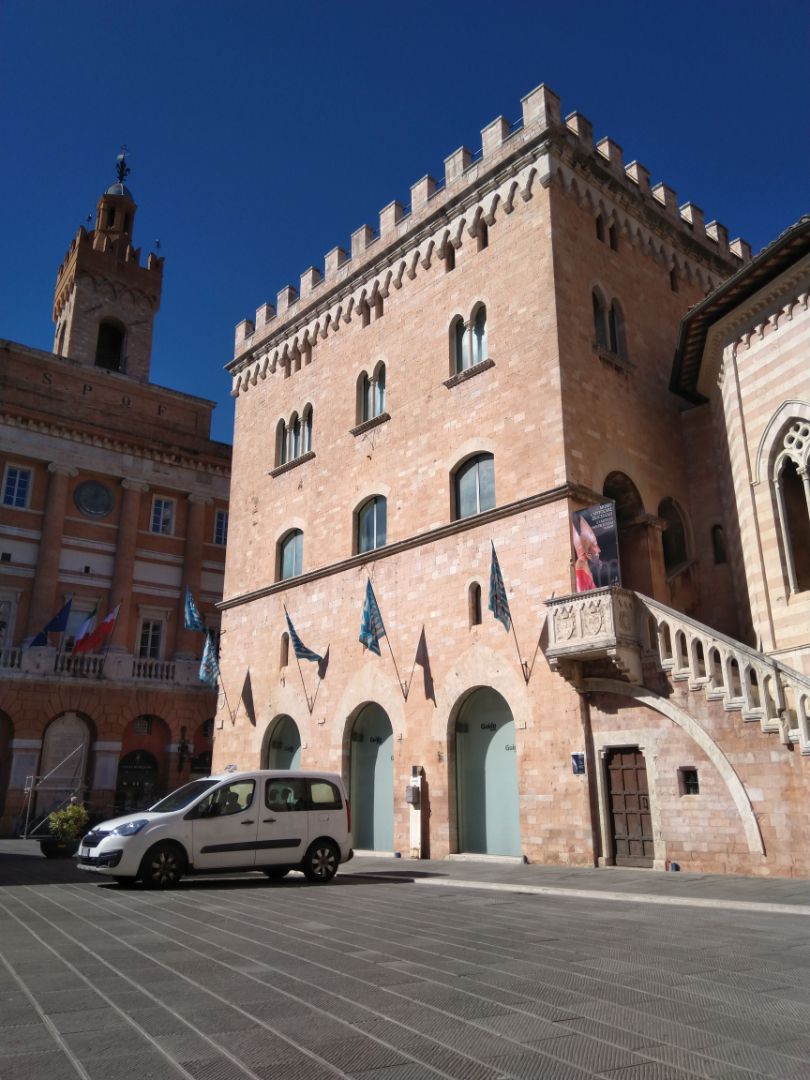
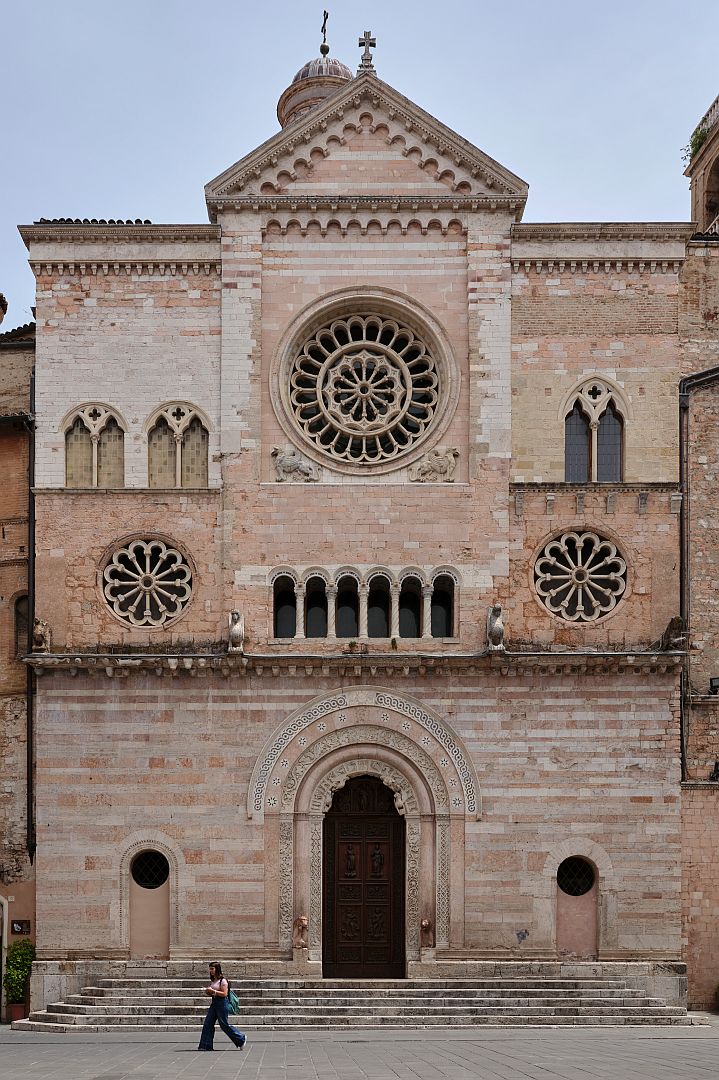
A brief History of Foligno
Like many other towns in Umbria, Foligno – ancient Fulginium, or Fulginiae – was founded by the Umbri in prehistory and absorbed into the Roman state in the Third Century BC. It was the point where the eastern and western branches of the Via Flamina reunited after passing either side of the Martani hills, and would also have been where the road from Perugia joined the Flaminia, so it would have been at an important crossroads.
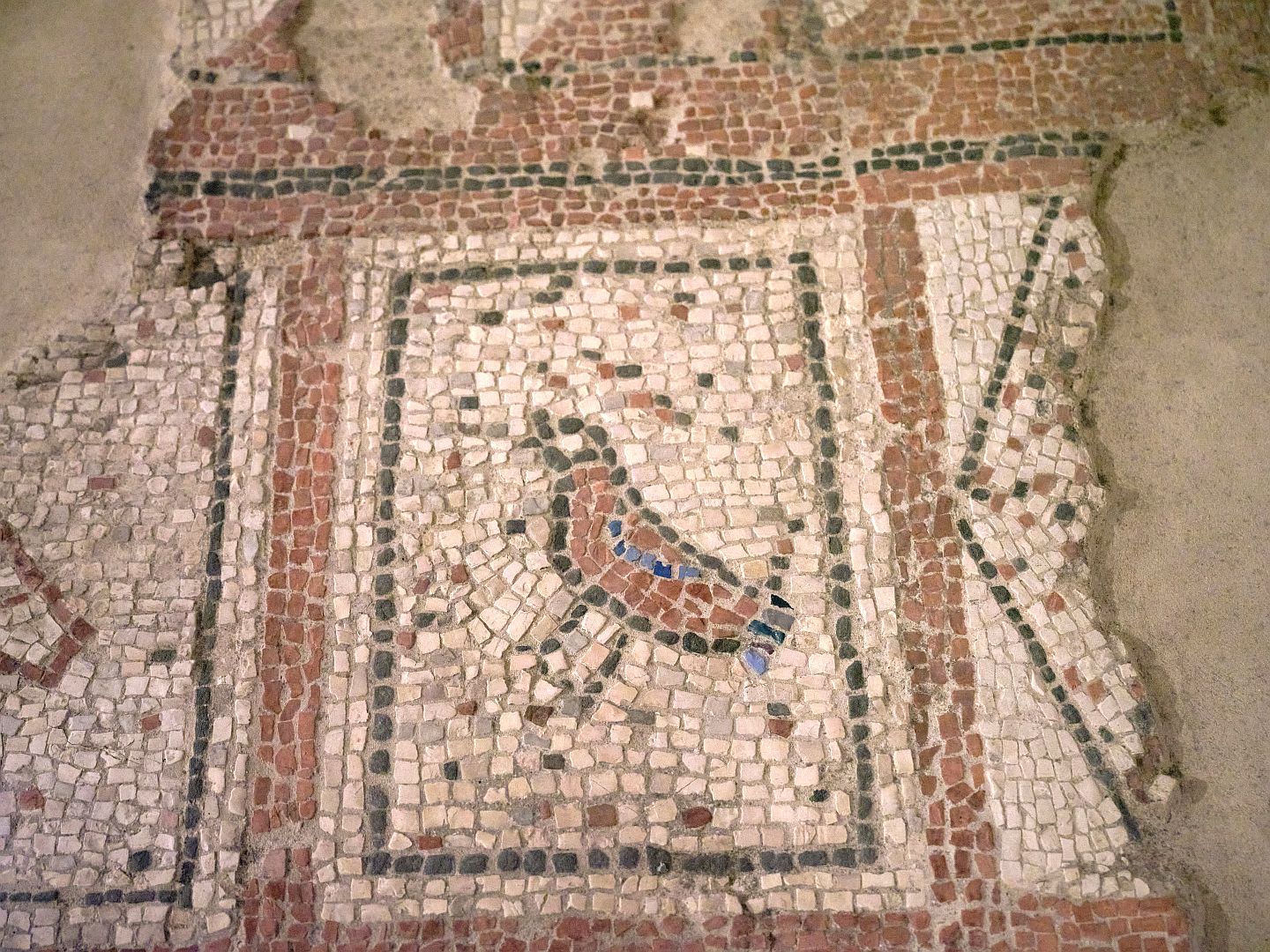
After suffering the usual despoliation at the hands of invaders in the Dark Ages, Foligno recovered and for a while became an independent player in the Guelph vs. Ghibelline power politics of Central Italy. In due course it was absorbed into the Papal States like every other town in the region.
The Trinci Family
From the 12th to the 15th Centuries, political evolution in central and northern Italy often took the same sort of path. Towns and cities developed the institutions of self-government – administration, courts, a militia or army. In many places one or more families would become wealthy and powerful, but would exercise that power through domination of those institutions and patronage rather than assuming power formally.
Families would seek advantage over rival families, and cities over rival cities, by allying themselves with one of the two “superpower” factions – the Papacy (the Guelphs) or the Holy Roman Empire (the Ghibellines).
Events in Foligno followed that conventional course. In the early 1300s the Trinci family were rivals with the Anastasi family for control of Foligno. Originally Ghibellines, the Trinci switched sides to the Guelphs in order to gain the assistance of Perugia and Spoleto to run the Anastasi out of town. For the next century and a half the Trinci ran Foligno until they fell out with the Papacy, at which point a papal army took the town, the last of the Trinci line was imprisoned and murdered, and a papal governor took over.
The Palazzo Trinci
Like other de facto Italian rulers at the time such as the Medici, the Trinci built an imposing palace in town, right next to the “official” city government buildings.
Or rather they didn’t exactly build it. They acquired an existing palace which had been created by merging several existing residential buildings, and then they renovated it. And what renovations they were. A grand gothic façade (unfortunately replaced by a neoclassical façade after earthquake damage in 1832), an absolute jewel box of a chapel, a private covered passage linking the palace to the Duomo (cathedral) next door, and a magnificent Gothic style internal staircase linking three floors of the building. All of those I will deal with in another post, because today I propose to talk about the so-called “Hall of the Liberal Arts”.
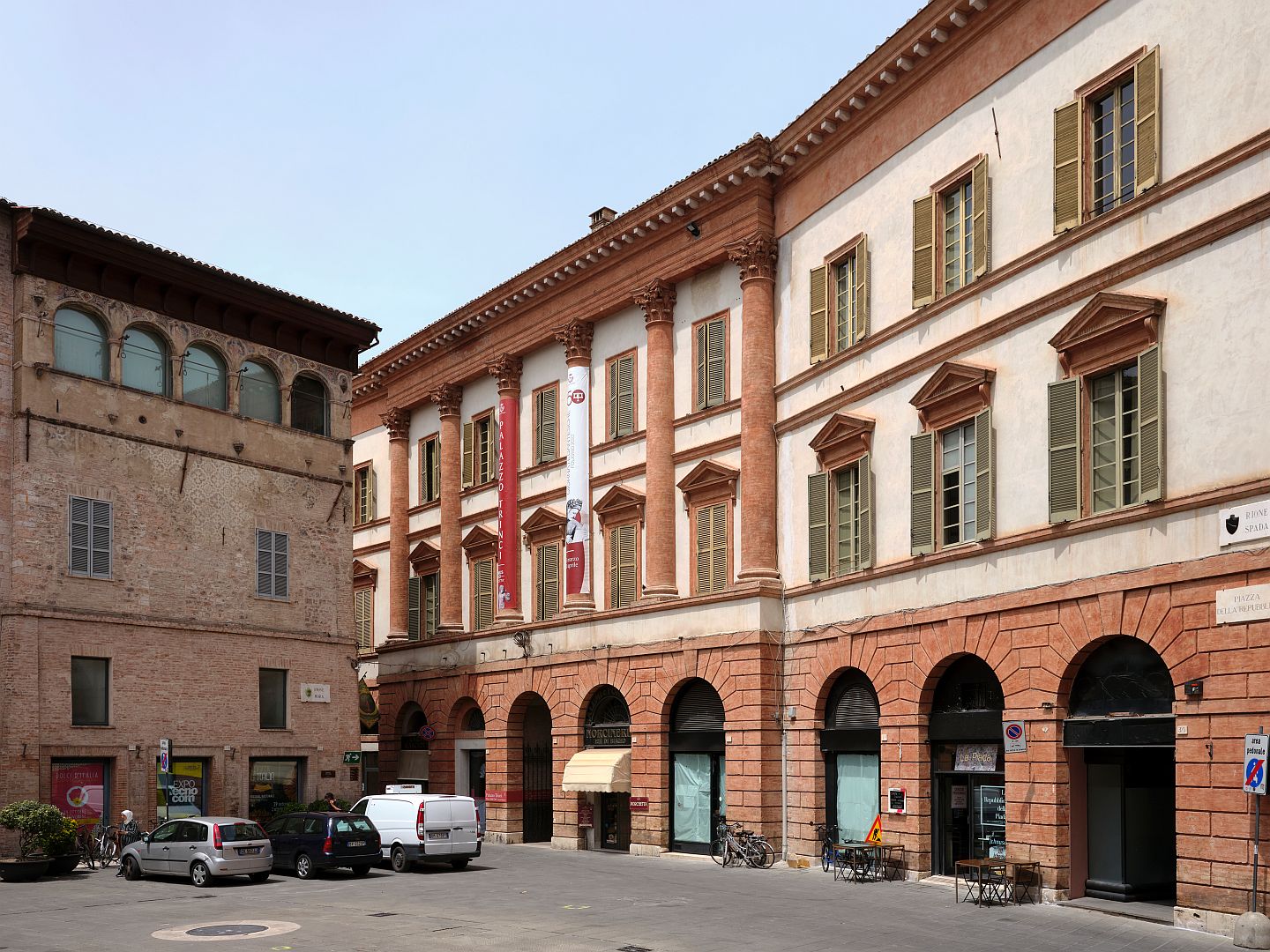
A Miraculous Survival
But first I should observe how miraculous it is that the Palazzo Trinci and its artworks should have survived at all, after the damage it received from war, the violence of nature and the malice and ignorance of humanity.
Major earthquakes damaged the building in 1477, 1703 and 1832. The roof fell in during a storm in 1899. And in 1944 bombs fell on the buildings at the rear of the complex, and on the town hall just in front.
More damage came through deliberate actions. After Foligno was brought under direct papal rule the Palazzo Trinci became the seat of the papal governors, and many of the frescoes associated with the Trinci were defaced. In the 1470s Pope Sixtus IV moved his residence to the palace during an outbreak of plague in Rome – and ordered that all surviving references to the Trinci be removed and replaced with references to him. Not only that but in one inscription he even claimed that the splendour of the palace was his own doing!
Worse was to come. In the late 18th Century the papal governor – a man of obvious taste and discrimination – decided that the place was looking a bit old-fashioned and had all the frescoes whitewashed over. Part of the building was converted to a jail, with inadequate sewage. Items from the archaeological collection were sold to wealthy foreigners. Even after Italian reunification and the end of Papal rule the building was to suffer further insult, being allowed to deteriorate further while housing shops, a theatre, the police headquarters and the Guardia di Finanza.
Rehabilitation of the building started towards the end of the 19th Century and the frescoes were uncovered and partly restored in the 1930s and 1950s. However in the 1980s the roof fell in again and it was only after the 1990s that a decade-long restoration brought the building to its current state in which it became the municipal museum.
The Hall of the Liberal Arts
The high point of the Trinci fortunes came at the end of the 1300s and the beginning of the 1400s when the head of the family was Ugolini III Trinci. After conducting successful campaigns in central Umbria on behalf of the Papacy he received many honours and rewards, and life in the Palazzo Trinci started to look a bit more like that of a court.
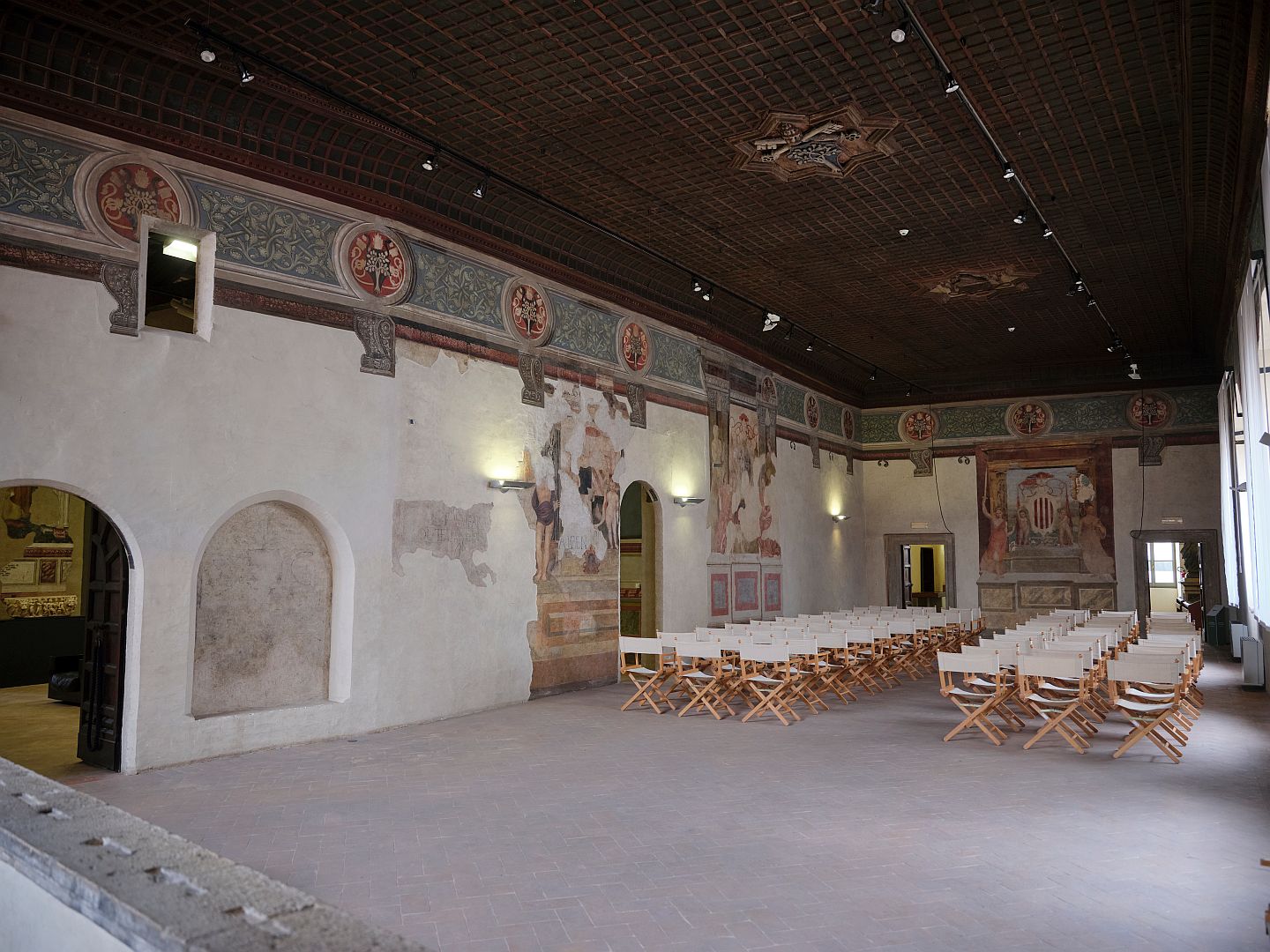
Men of letters and artists were attracted there – people who think the Renaissance started later and in Florence might say it was a bit early to call them “humanists”, but the whole thing has a Renaissance feel to it. Two particularly noteworthy associates were the poet Federico Frezzi and the artist Gentile da Fabriano.
Frezzi wrote a laudatory poem called Quadriregio which praised Ugolino and made references to the Trinci’s claims, made by all great families at the time, to origins in mythological antiquity. In particular the Trinci traced their line back to Romulus, and the story of Romulus was illustrated by Gentile da Fabriano in one of the halls, including the story of the Trojan woman and Vestal Virgin Rhea Silvia who was made pregnant by the god Mars and bore the twins Romulus and Remus (and was then executed for betraying her Vestal vow of chastity).
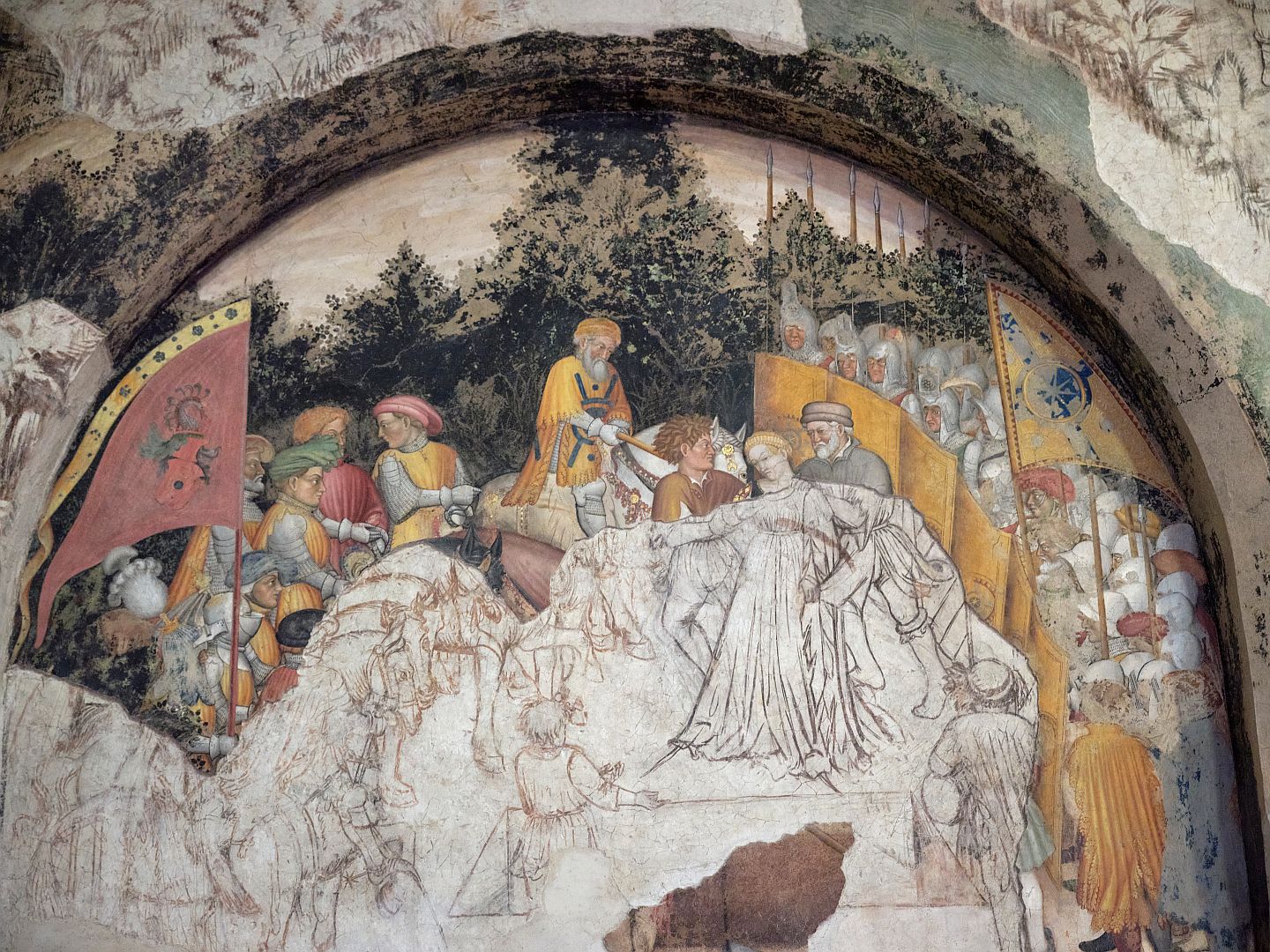
In the photograph above, the ochre drawings visible where the plaster has fallen away (known as “sinopia”) have not been added by modern restorers. They are the drawings by the original artist before the wet plaster was applied, over which they would then quickly paint, having committed the underlying drawing to memory. The sinopia only become visible if the plaster is damaged and falls away.
The traditional execution method for an unchaste vestal was suffocation by being buried alive, hence the pit to which she is being dragged. It seems an odd way to celebrate a woman one is claiming as one’s ancestress, by having a large picture of her execution in the house, but tastes change. In any case the artist’s depiction of everyone in contemporary late 14th-Century dress makes it very interesting.
Gentile da Fabriano was a leading exponent of the late-Medieval style known as “International Gothic”. He was employed to decorate a large hall in the Palazzo – then the library, it is now known as the “Hall of the Liberal Arts” after his frescoes. Although Frezzi’s Quadriregio is lost, it is thought that much of Gentile’s work is derived from the poem.
The main feature of the hall is seven portraits – personifications of the seven liberal arts. These were divided into two groups. The early arts (known as the Trivium, or three paths) were Grammar, Logic and Rhetoric. The later arts (the Quadrivium, or four paths) were Arithmetic, Geometry, Music and Astronomy.

By the way, when the Quadrivium was introduced, there was some resistance from older scholars. Younger scholars responded by suggesting that the Trivium was superficial and lightweight in comparison. “Trivial“ therefore became a term of intellectual abuse. The Palazzo Trinci frescoes do not weigh in to the debate other than to put the Quadrivium closer to the centre of the composition, implying that they are further up in the hierarchy.
But in the centre of the composition, and therefore queen of all the disciplines, was Philosophy. This, alas, was damaged beyond repair at some point. We are fortunate that in the 1770s a scholar called Ludovico Coltellini sketched various parts of the frescoes, including the head of Philosophy – a beautiful crowned woman – and his notebook survived.
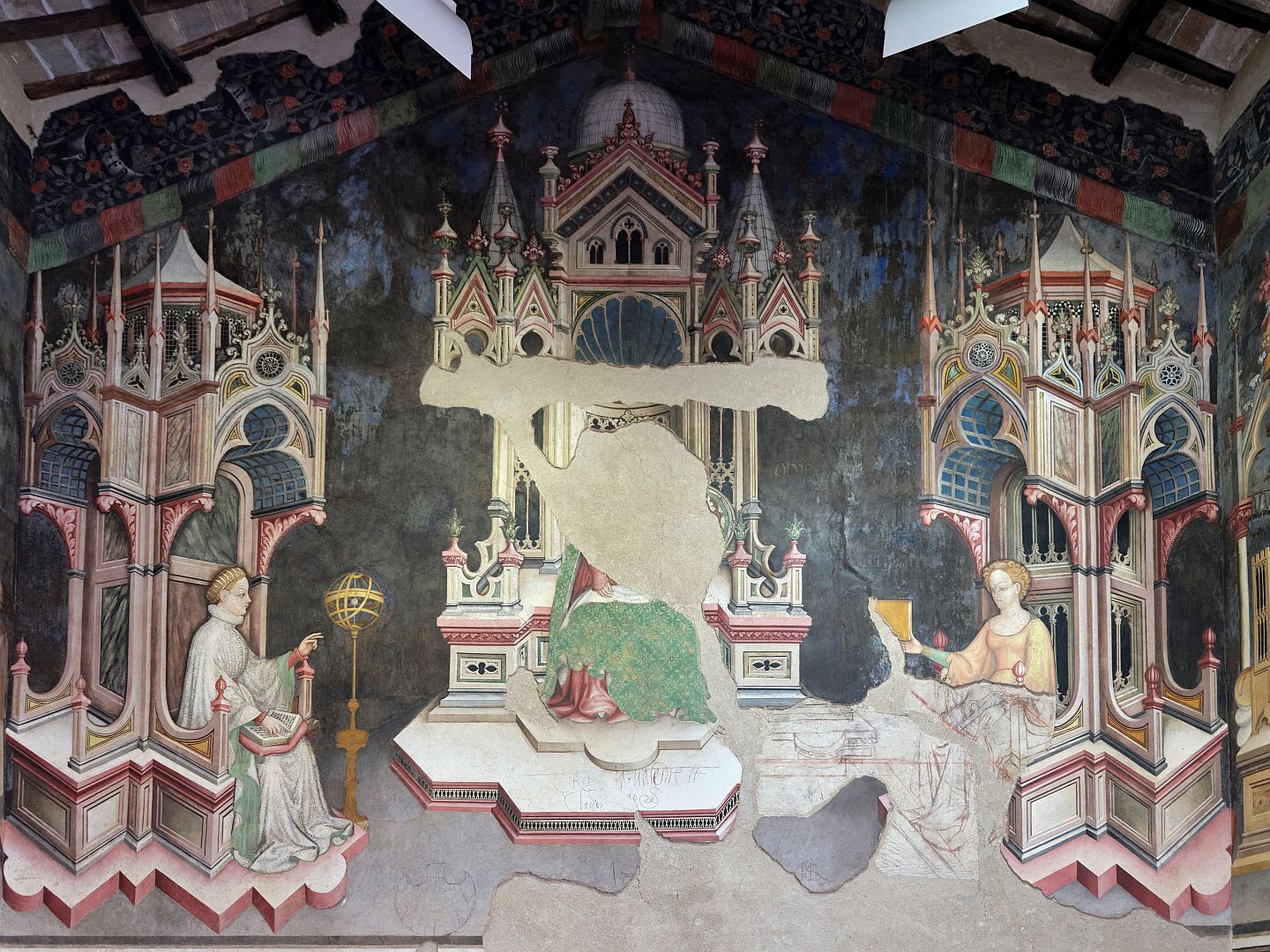
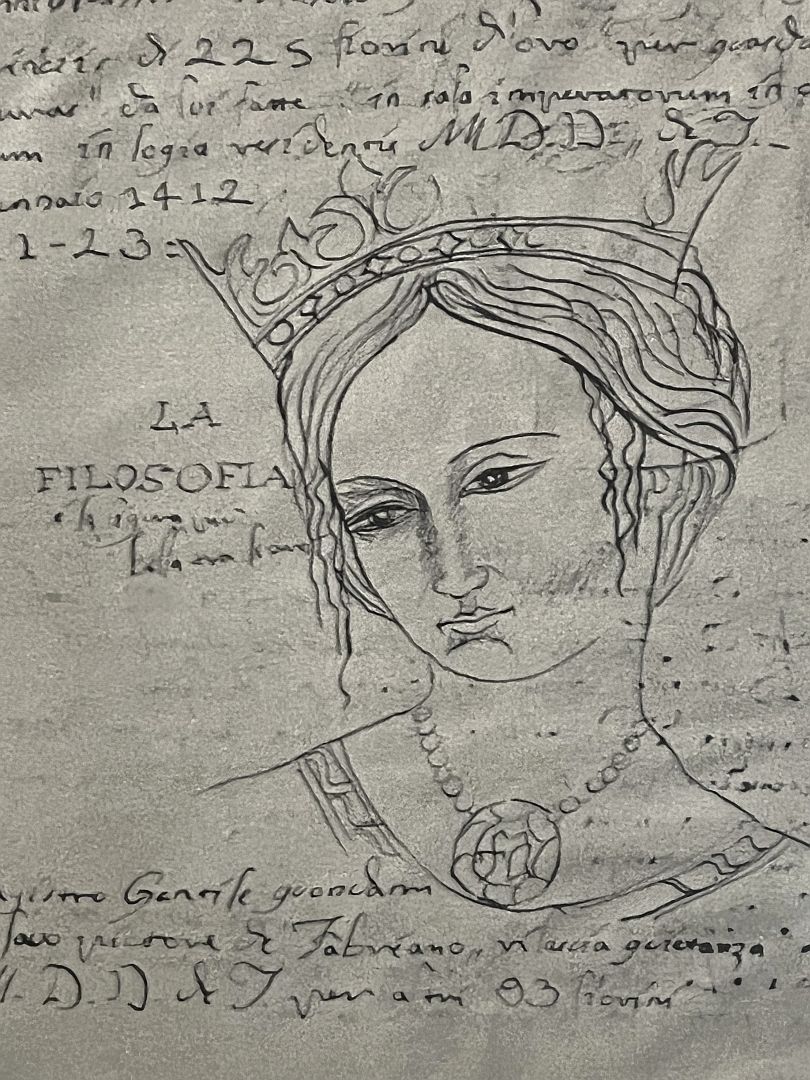
The fact that Philosophy was still intact in the 1770s suggests that the damage probably occurred in the earthquake of 1832.
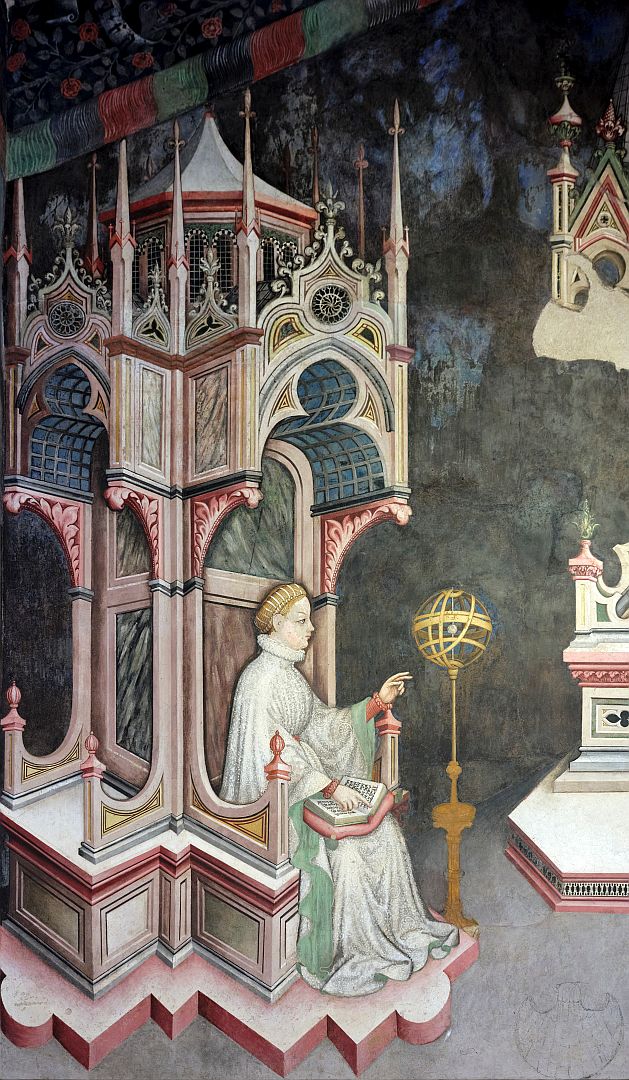
Each liberal art is represented by a female figure, sometimes attended by another figure, either a student or practitioner.
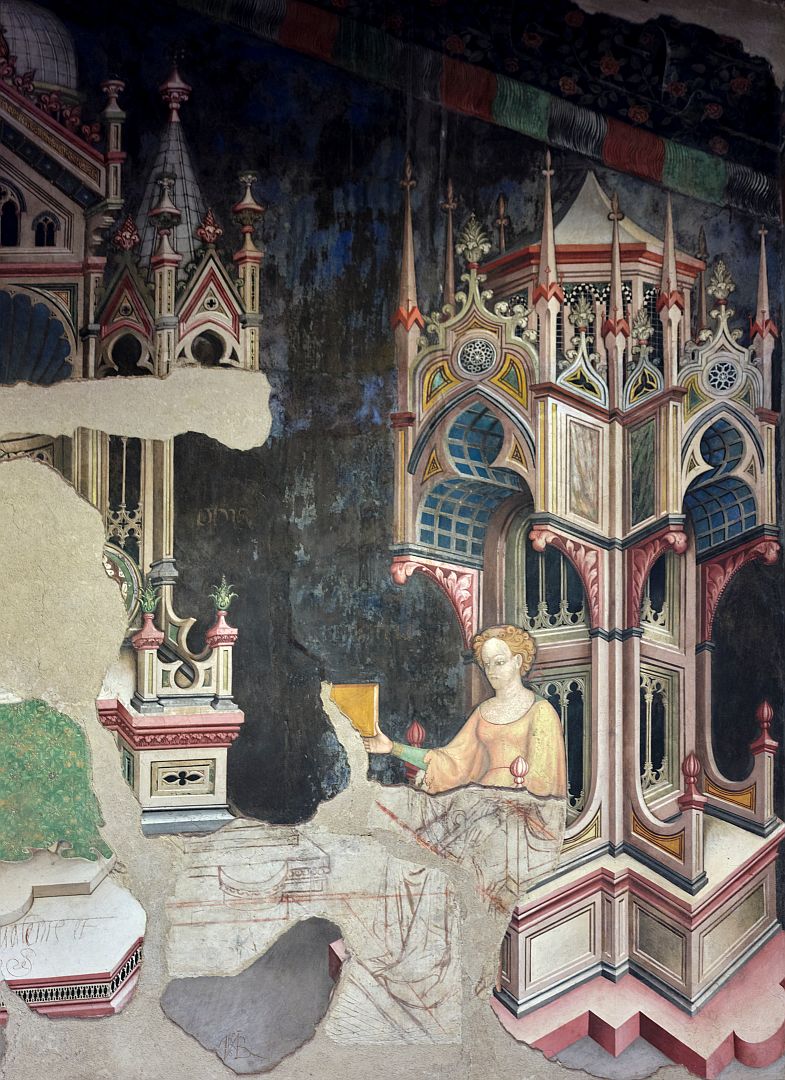
Below are Music and Logic. Music is playing a portative organ and a chime of bells, and she is clearly getting into it, or as a former conductor of ours used to say, “giving it some welly”. Logic is an older woman holding snakes. Not sure why, although Cristina Galassi (see “further reading”, below) suggests that this suggests the sophisticated deception of words. Maybe using logic to defeat deception is like wrestling with snakes.
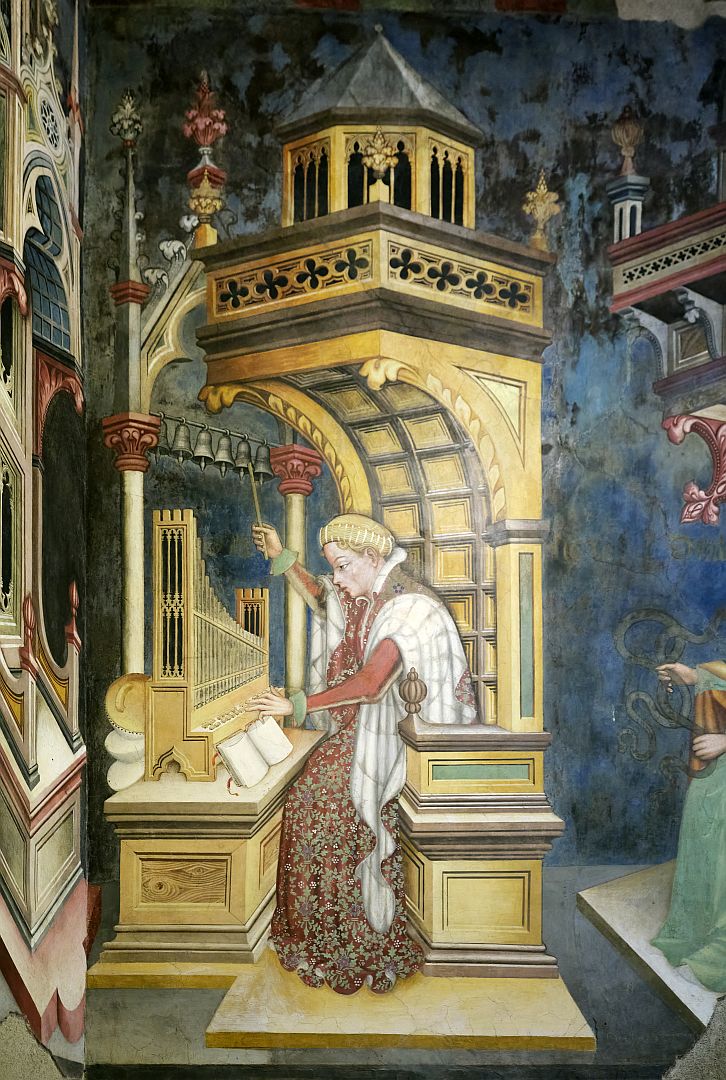
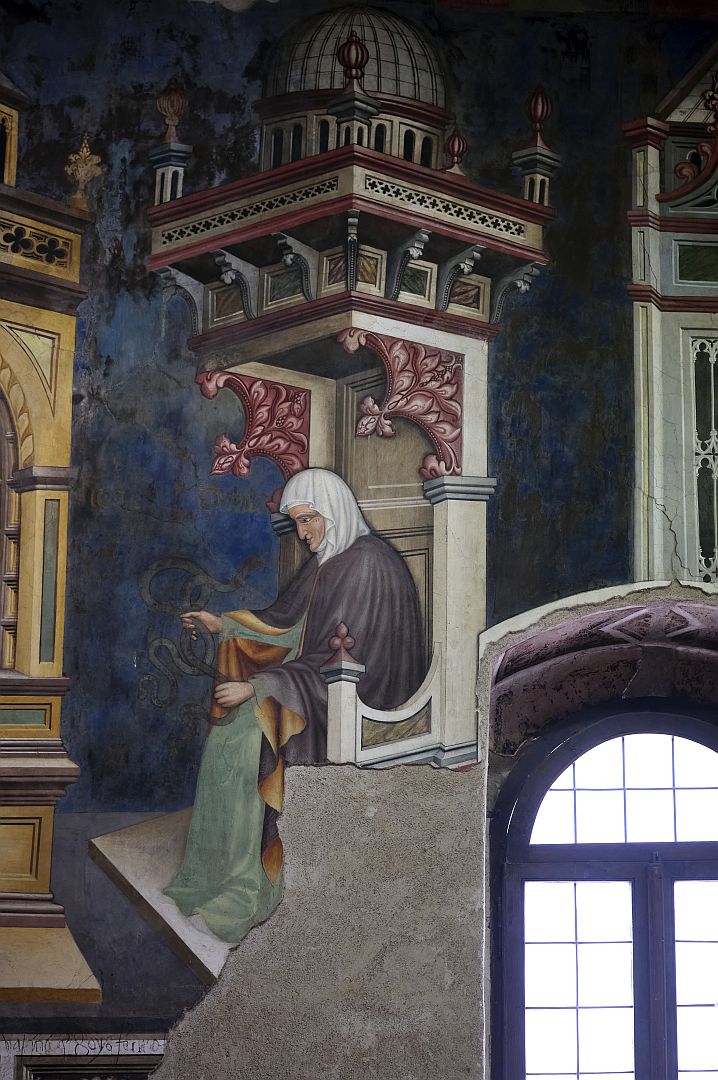
Grammar is a teacher instructing a child, holding the book for him as he traces the words on the page.
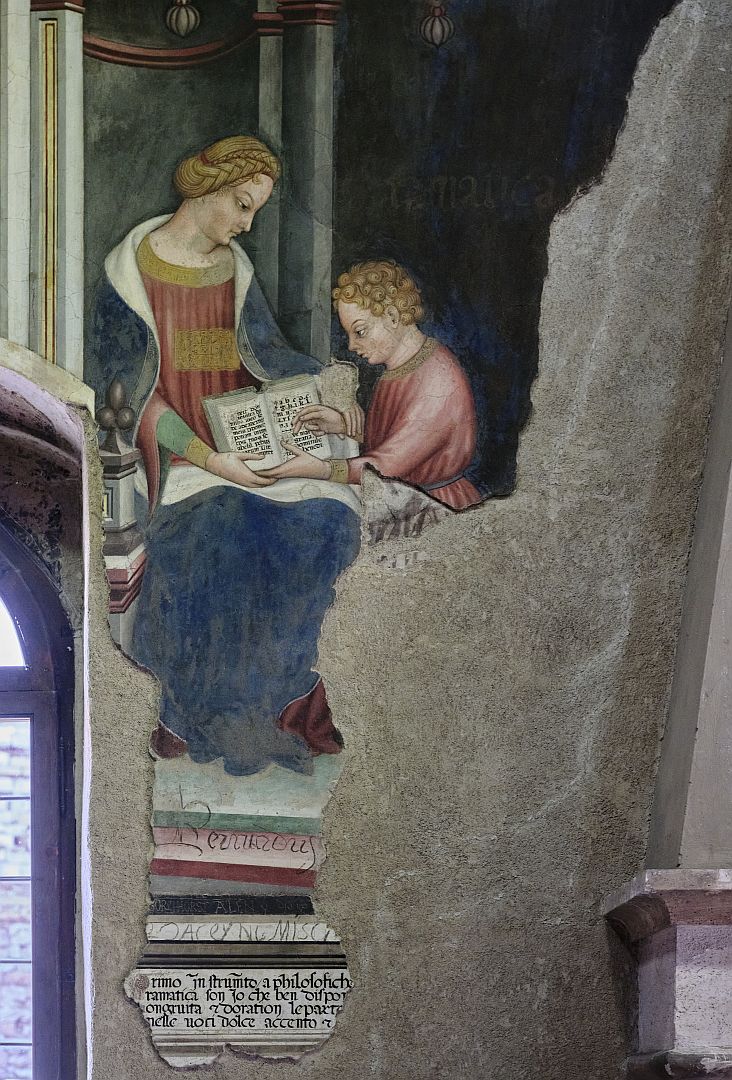
Further Reading
Some useful information on the Palazzo Trinci can be found in Umbria: A Cultural Guide by Ian Campbell Ross (Signal Books, 3rd Edition 2013, pp. 331-332) but by far the most useful reference I have found is Palazzo Trinci in Foligno by Cristina Galassi (Quatroemme Perugia 2005, English translation by Leah Dabrowski). We bought our copy in the Palazzo Trinci museum shop, but copies of both the Italian and English editions seem to be available online.
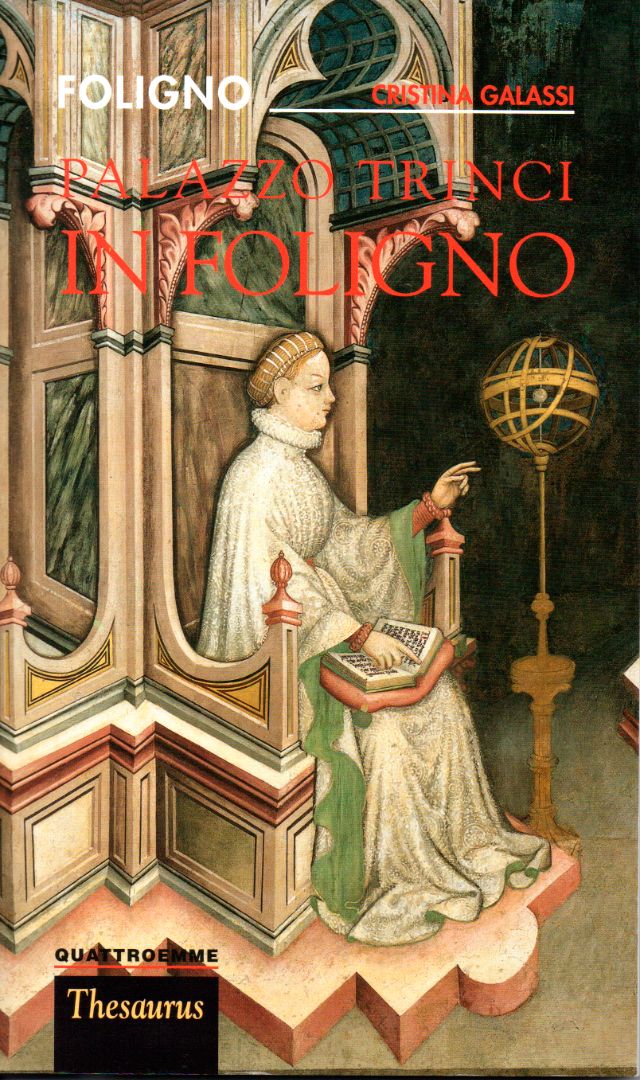
I will follow up with another post in due course regarding other parts of the Palazzo Trinci. (Edit: I have now done so.)

2 Replies to “Foligno: The Palazzo Trinci and the Hall of the Liberal Arts”